Art & Exhibitions
The Most Important Art This Week Is Outside the UN’s Paris Climate Summit
Brandalism's hijacked ads keep hope alive even as protest is shut down.
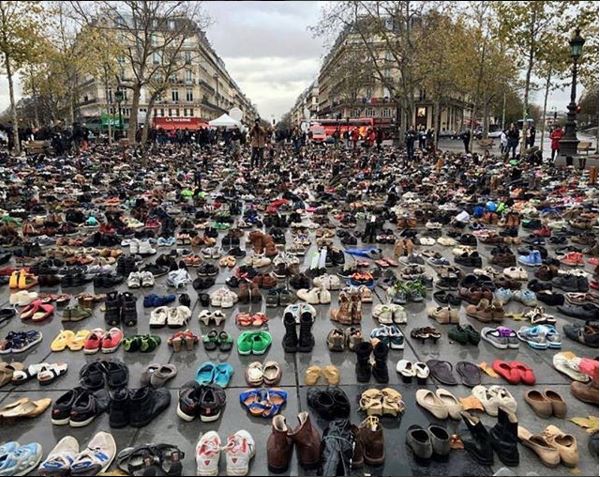
Brandalism's hijacked ads keep hope alive even as protest is shut down.

Ben Davis

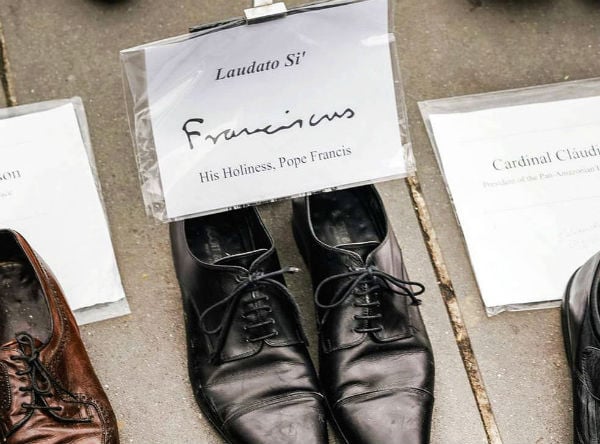
Pope Francis’s shoes.
Image: Courtesy Avaaz.org.
The most vibrant and vital images of the week, the ones you will remember, will be out of Paris.
The UN’s Paris Climate Summit is the most important such diplomatic assembly in recent memory. If the gathered world notables do not reach binding accords necessary to meaningfully—and that means drastically—steer the planet away from carbon-based suicide, we are in effect locking the garage door on much of humanity, having already turned on the car.
The science has gotten more despairing since the Copenhagen Climate Summit five years ago, whose stalemated outcome was already taken as a death sentence for the populations of low-lying island nations like the Maldives. There is some cautious optimism in mainstream circles that pragmatic self-preservation will force action from bigwigs in Paris.
Yet given the tremendous, corrupt inertia of this process and the corporate entanglements of the players, odds are against the transformative deal needed. The BBC has described the opening days as resembling a game of “Climate Cliché Bingo,” with leaders spouting all the fine-sounding, stock phrases you’ve come to expect: “What’s at stake is the future of the planet…” or “think of your grandchildren…”
Which is why, despite the “State of Emergency” declared in the wake of the recent terrorist attacks, protest continues outside.
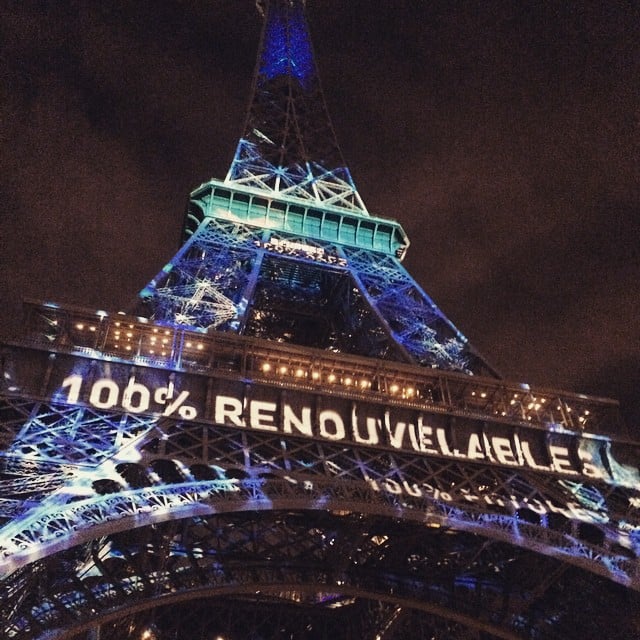
Photo of Naziha Mestoui’s 1 Heart 1 Tree
Image: via @stefperra Instagram
Art, in its way, is a part of this. There’s an Artists 4 Paris initiative, which is placing ecologically themed works by figures like Olafur Eliasson and Michelangelo Pistoletto. The artist Naziha Mestoui even managed to get the entire Eiffel Tower illuminated with “virtual trees” for her slick interactive 1 Heart 1 Tree project.
My taste is to art that is a little closer to the ground. Literally.

“Silent march” during the Paris Climate Summit
Image: Courtesy Lila Howard
With official marches banned and police firing tear gas and sonic bombs at those who tried, over the weekend, some 20,000 shoes were laid out in the Place de la République. This symbolic “silent march” was organized by a group called Avaaz. Supporters from actress Marion Cotillard to Pope Francis sent their footware. But it is the mass that matters, and makes the act moving.
The field of bereft boots, sneakers, and sandals unites so many associations. It stands in for the march that wasn’t, because of the French government’s post-attack security measures.
It also looks like the aftermath of the rapture, and so evokes both the self-inflicted extinction-event that humanity faces, and the miraculous delivery from it that we are left hoping for.
At the same time, the shoe is an important metonym for ecological consciousness: our feet are what root us to the ground, to the earth, the planet.
The spectacle contains opposites. It is beautiful in that way.
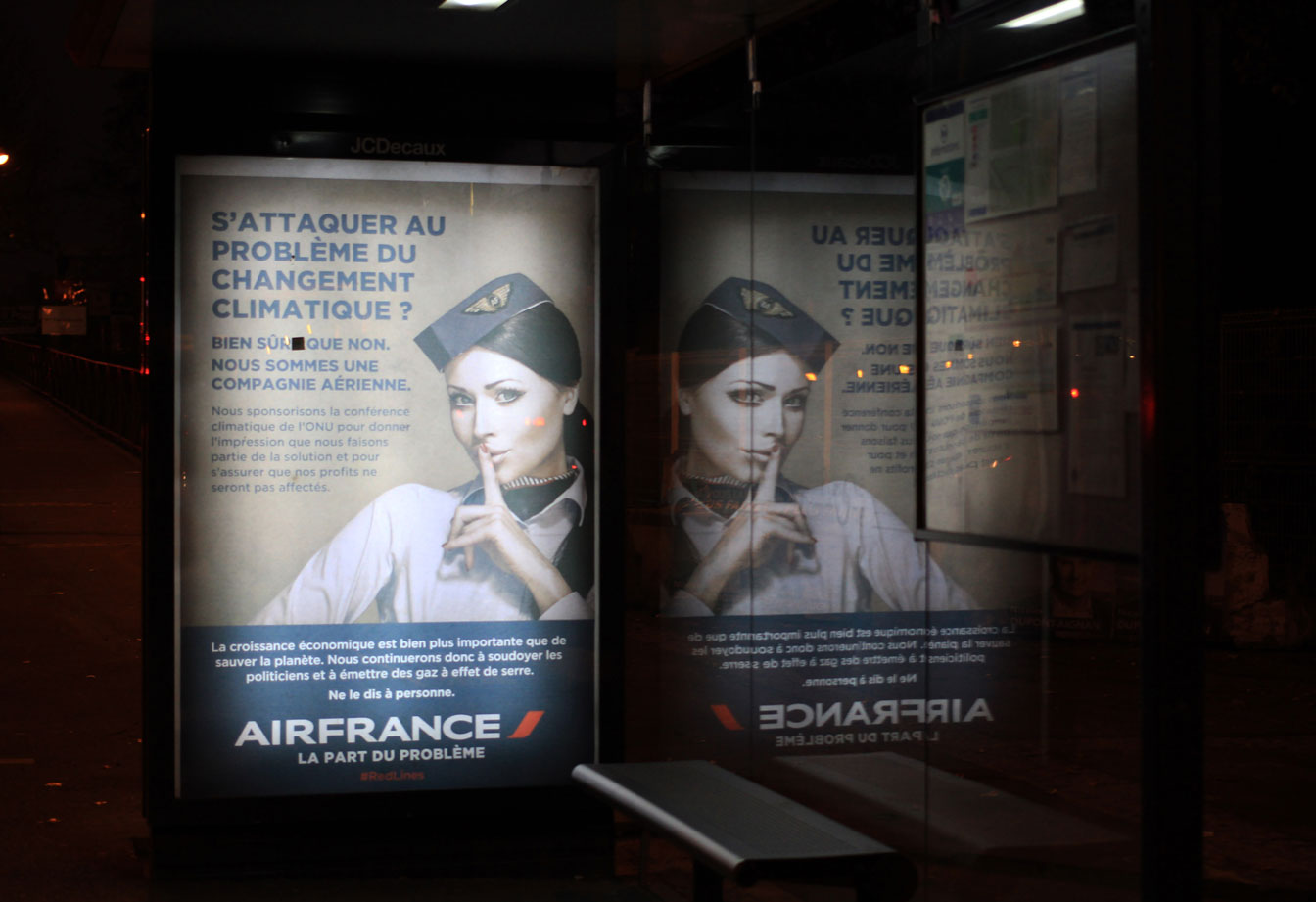
Revolt Design’s poster for the Paris Climate Summit.
Image: Courtesy Brandalism.
Here’s another artistic response to the Summit, also reacting against the regulation of public speech: UK street-art collective Brandalism summoned an international coterie of designers and artists, and claims to have hijacked some 600 outdoor advertising spaces across the city with satirical ads. This snappy gesture tears a page from the Situationist handbook—fitting in the cradle of May ’68.
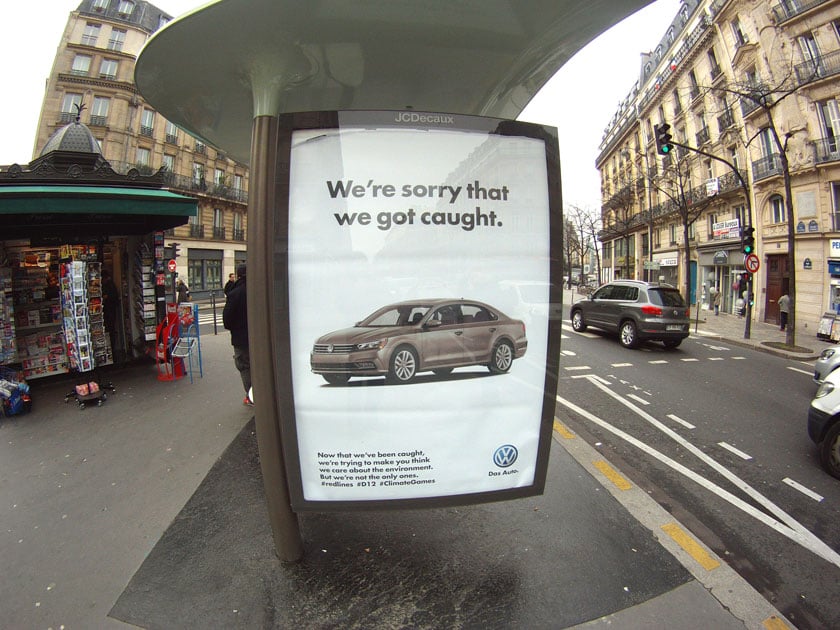
Barnbrook’s fake ad for the Paris Climate Summit.
Image: Courtesy Brandalism.
Surely Debord and Co. would have gotten a chuckle from détournements like the design group Barnbrook’s mock ad for disgraced auto giant Volkswagon, declaring “We’re Sorry We Got Caught.” It reminds you just how dangerous it can be to take official “green” pledges at face value.
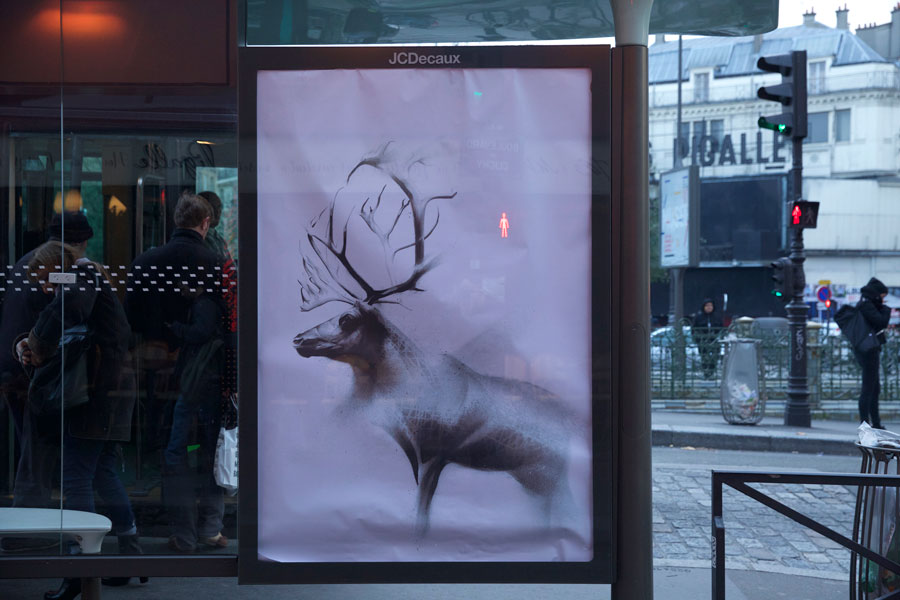
Aaron Li-Hill’s image for the Paris Climate Summit.
Image: Courtesy Brandalism.
Brandalism’s array of contributions is a mixed bag. There are satires of the perfidies of various world leaders, and moody images of endangered species. Some are whimsical, even inscrutable.
The ones I like the best are the most gut-punchingly direct: the Brooklyn group Not An Alternative’s appeal to the Louvre to ditch its carbon-spewing sponsors; Gilf’s simple black silhouettes of a hand reaching above the waves, with the inscription “The Time to Act.”
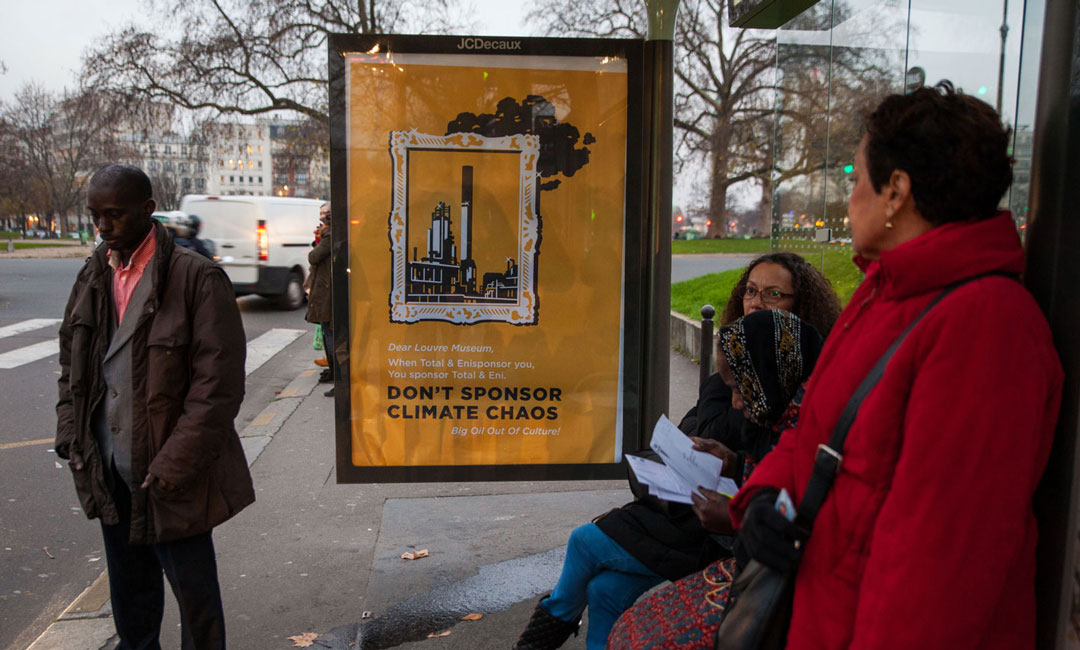
Not An Alternative’s poster for the Paris Climate Summit.
Image: Courtesy Brandalism.
The incantatory slogan by a direct action organization, Climate Games, sticks out to me. ”We Are Not Fighting for Nature,” it declares. “We Are Nature Defending Itself.”
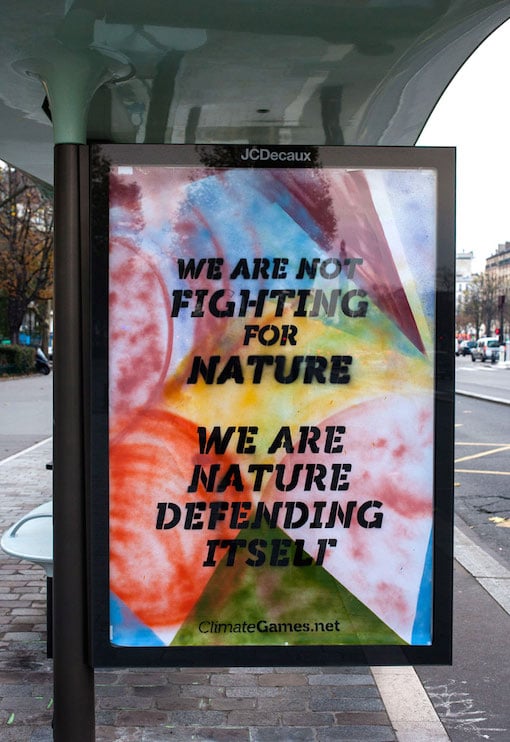
Climate Games image for the Paris Climate Summit
Image: Courtesy Brandalism
And yet in truth, it still feels so small.
I know that on their own, these kinds of gestures risk becoming the activist version of “Climate Cliché Bingo,” fine as spectacles, but not going beyond that. And yet despair is inertia’s friend. We need to believe that we can act together on a shared vision in a more-than-symbolic way. Art may often be used as a vehicle to transform radical impulses into simplistic flares of feelgoodery, but I continue to hope it might also have a small part to play in something constructive.
In this light, what makes both these actions—those ghostly shoes and even more so these wry billboards—stand out to me is not the individual gestures, but their collective spirit; the unity within diversity; the small suggestion, hidden within each, that diverse imaginations can work towards collective goals.
Meanwhile, far away in Miami, the professional art world is assembling for the fairs and their accompanying spectacle of inebriated frenzy—today’s prerequisite to get the moneyed public interested in the cause of Art. Most of it will be tacky and forgettable, though I know that amid it all, some number of decent spaces and artists will find a way to hustle money to survive another year, and do good works.
But against the background of Paris, this frenzy of big-budget conspicuous consumption must have a particular orchestra-on-the-Titanic quality. Here is the Financial Times, that soapbox of radical prophecy, surveying the most recent predictions about the effects of climate change:
A few rich cities—most obviously Miami, which is doing almost nothing to protect itself—will depopulate or be entirely abandoned, most likely after awful floods or hurricanes. But the US can cope without Miami.